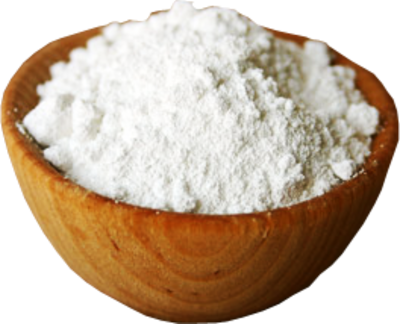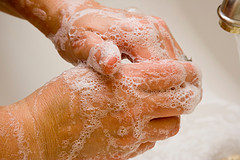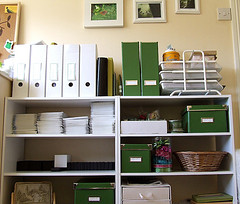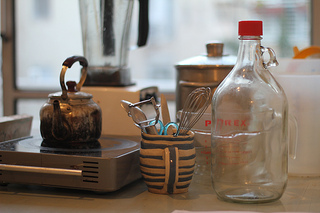Microwaves are workhorses: reheating lunches, reviving last night’s leftovers, and occasionally exploding a rogue pea. That quick splatter can become baked on gunk fast, so a little routine care keeps your microwave smelling fresh, working efficiently, and looking like new. Stay tuned for some quick and easy tips to keep that microwave sparkling!
Why clean the microwave regularly?
A clean microwave:
-
Prevents burnt smells and lingering odors.
-
Keeps food from heating unevenly (baked on grime absorbs energy).
-
Reduces bacteria and sticky residues on surfaces you touch.
-
Extends the appliance’s life and avoids smoky mishaps.
Supplies you’ll want on hand
(Everything here is pantry friendly or mild nothing harsh required.)
-
White vinegar (distilled)
-
Baking soda
-
Fresh lemon (or bottled lemon juice)
-
Mild dish soap (plant-based if you prefer)
-
Microfiber cloths or soft sponge (non-abrasive)
-
Microwave safe bowl or large measuring cup
-
Plastic scraper or silicone spatula (no metal)
-
Small brush or old toothbrush for crevices
-
Optional: 70% isopropyl alcohol wipes for controls/touchpoints
Quick daily/after-use wipe (30–90 seconds)
-
Let the interior cool a little after use.
-
Wipe spills with a damp microfiber cloth or sponge. For sticky drips, a squirt of dish soap on the cloth helps loosen them.
-
Dry with a clean cloth.
Do this every day you use the microwave it’s the single best way to avoid stubborn buildup.
The steam (no-fuss) method best for general cleaning and odors
Why it works: Steam loosens dried food and softens grease so you can wipe it away with minimal scrubbing.
Recipe & steps:
-
Fill a microwave-safe bowl with 1 cup water and 1/4 cup white vinegar (or water + slices of 1 lemon).
-
Place the bowl in the microwave and run on high until the window fogs and the solution boils (typically 3–5 minutes).
-
Keep the door closed for 3–5 minutes to let the steam work.
-
Carefully remove the bowl (it’s hot) and wipe the interior walls, ceiling, and door with a damp microfiber cloth. Most splatters lift easily.
-
Wash the bowl and turntable with warm soapy water and dry.
Tip: If odor is the issue, lemon gives a fresher scent; vinegar is more powerful against grease and mineral residue.
Tackling stubborn, baked on stains
-
Make a paste: 2 tablespoons baking soda + about 1 tablespoon water (adjust to spreadable paste).
-
Apply the paste to the stain and let sit 5–15 minutes. For very stubborn marks, leave up to 30 minutes.
-
Use a damp sponge or plastic scraper to lift the softened residue. Rinse with a clean damp cloth.
-
Repeat once if needed.
Why baking soda: it’s a gentle alkaline abrasive that helps break down burnt food without scratching most interiors.
Important: Don’t use metal scouring pads or steel wool they’ll scratch enamel coatings and damage microwave interiors!
Special cases
-
Burnt eggs/cheese: Cover the hardened spot with a damp paper towel and run the microwave on low power in 20–30 second bursts to re-soften, then wipe.
-
Heavy grease: Steam (vinegar + water) first, then use a drop of dish soap on a damp cloth to cut the grease.
-
Stains on painted or coated interiors: Be gentle steam + soft cloth is usually enough. If your manual warns against vinegar or abrasives, follow the manufacturer’s guidance.
Turntable, roller ring, and removable parts
-
Remove the glass turntable and roller ring.
-
Wash in warm, soapy water (dishwasher if manufacturer allows). Use baking soda and a soft brush for stuck-on spots.
-
Dry completely before reassembling.
Cleaning these prevents grime from being redistributed and reduces odors from trapped food.
Exterior & control panel
-
Control panel / buttons: Never spray directly. Lightly dampen a microfiber cloth with water (or a 50/50 water + vinegar solution). Wipe gently. For sticky grease, a 70% isopropyl alcohol wipe on a cloth works don’t pour alcohol on the panel.
-
Stainless steel exterior: Use mild dish soap + water or a 50/50 water + vinegar mix. Wipe with the grain, then buff dry with a microfiber cloth. Avoid abrasive powders or pads.
-
Door seal & edges: Use a soft brush or cloth to remove crumbs and splatters; moisture around the seal can cause odors and poor sealing.
Deodorizing (if smell persists)
-
Place an open box or bowl of baking soda inside overnight (microwave off) to absorb odors.
-
Coffee grounds in a bowl overnight also absorb and neutralize smells.
-
Activated charcoal (in a bowl) is a powerful odor absorber if you have it.
Frequency guide
-
Daily: quick wipe for visible splatters.
-
Weekly: steam method + wipe (if you use the microwave frequently).
-
Monthly: remove turntable, deep clean interior with baking soda paste where needed, clean exterior and vents.
-
Immediately: clean spills right after they happen to prevent scorching.
Keeping your microwave clean doesn’t have to be a chore. With a few simple steps of steaming, wiping, and spot treating stubborn spots you can maintain a sparkling, fresh smelling appliance that works efficiently and lasts longer. A little regular care goes a long way in preventing baked on messes and lingering odors.
Remember, it’s all about consistency: quick daily wipes, weekly steam sessions, and monthly deep cleans make a world of difference. Your microwave will thank you… and so will your leftovers!






